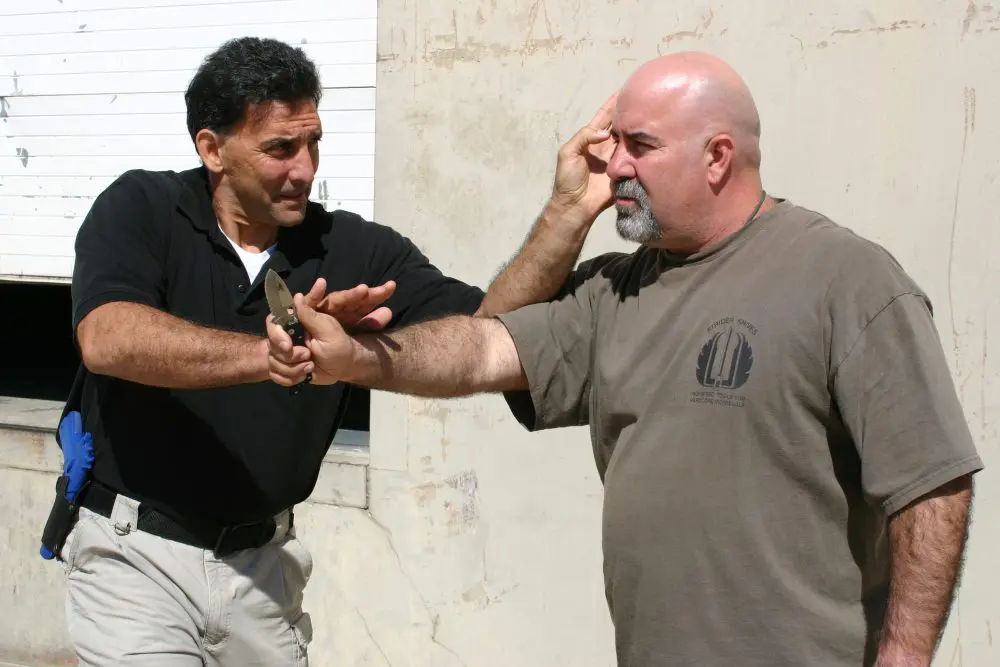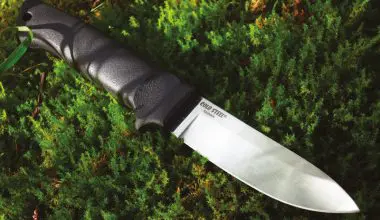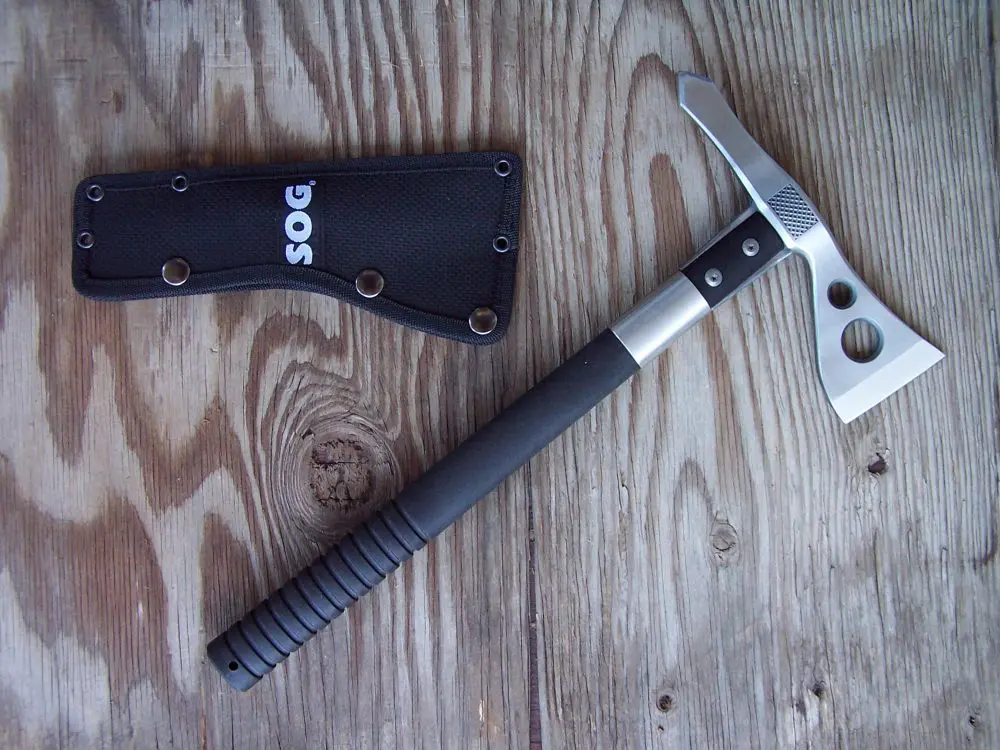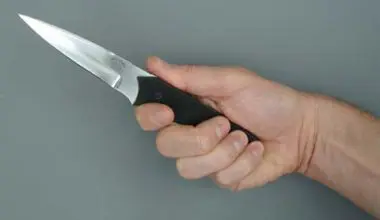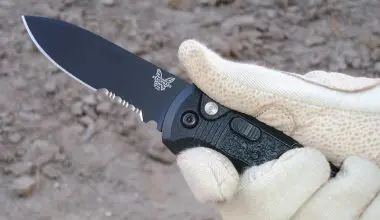“Is this a dagger? Because if it is, you will be arrested.”
These were the words I heard from the customs officer in the Philippines as I was heading back to the United States. In the eyes of customs officials, it seems that any type of small fixed blade is made for stabbing people, but a bolo is ok because it is a tool.
Upon letting the officials know I was out in the jungle camping and writing a story on my experiences there, they smiled and let me go without confiscating the knives. My kind of country!
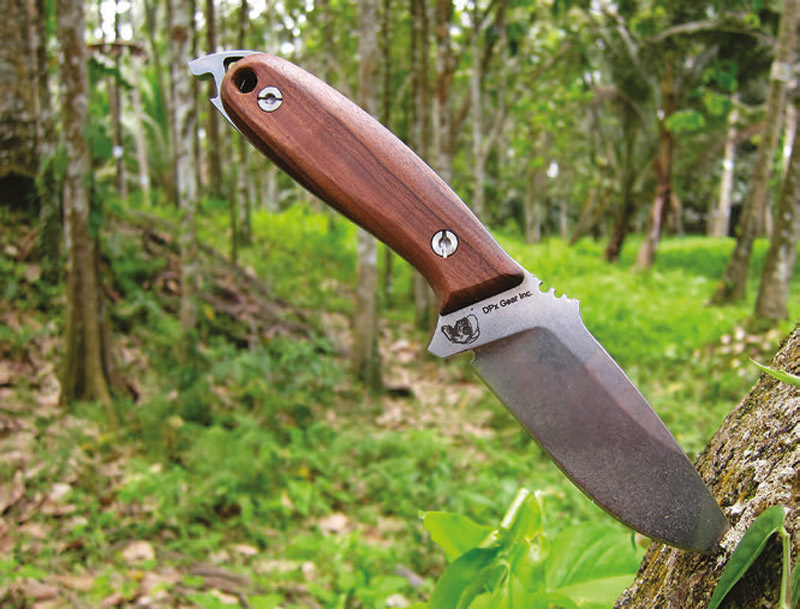
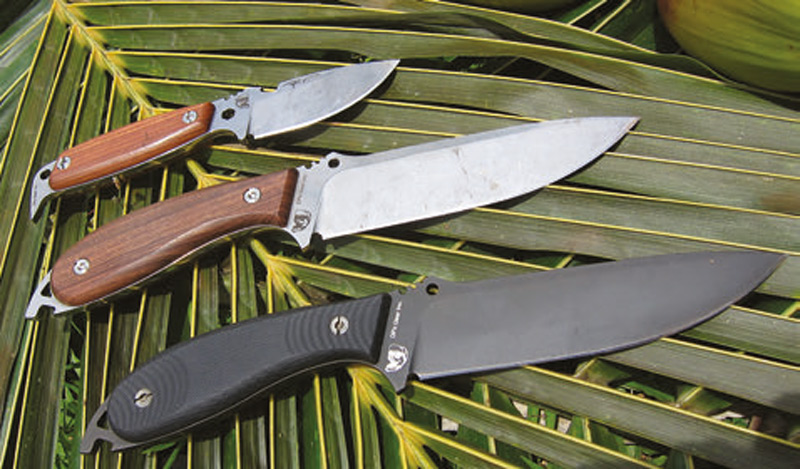
During my five weeks in Mindanao, Philippines, a few DPx Gear Knives were my traveling companions. Because of the Abu Sayyaf group, Mindanao currently has a travel advisory issued by the United States, Australia, and the United Kingdom. Abu Sayyaf is an Islamic separatist group operating in the southern Philippines and engaging in kidnappings for ransom, bombings, and assassinations. The perfect place for hostile-environment survival tools!
DPx Gear is the brainchild of adventurer and author Robert Young Pelton, and incorporates his vast experience in conflict zones like Afghanistan, Somalia, Iraq, Burma, and many other inhospitable places.
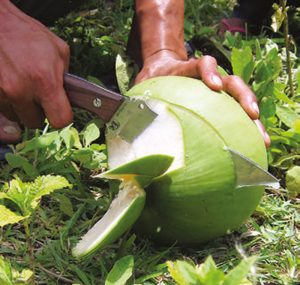
Table of Contents
HOSTILE ENVIRONMENT TOOLS
The knives I used on this trip were the DPx HEST II, HEFT 4, and HEFT 6 Woodsman versions.
The Woodsman knives share a few characteristics: for the handle material, Brazilian Santos hardwood scales that can be removed to reveal a hollow chamber where survival items can be stored; stonewashed finish; and highquality Italian leather sheath.
The HEST (Hostile Environment Survival Tool) II features Sleipner tool steel with a Rockwell hardness of 60. The blade is 3.15 inches (80.01mm) long and .187-inch (4.8mm) thick. There is a pry notch on the spine that serves double duty as a bottle opener. Additionally, there’s a hex driver at the hilt and a wire breaker at the base of the blade. Like the original HEST, this version has a pry bar that is angled out enough to accommodate bulky winter or work gloves. The HEST II Woodsman knife alone weighs 5.2 ounces. This is the Swiss Army Knife of the fixed blade world.
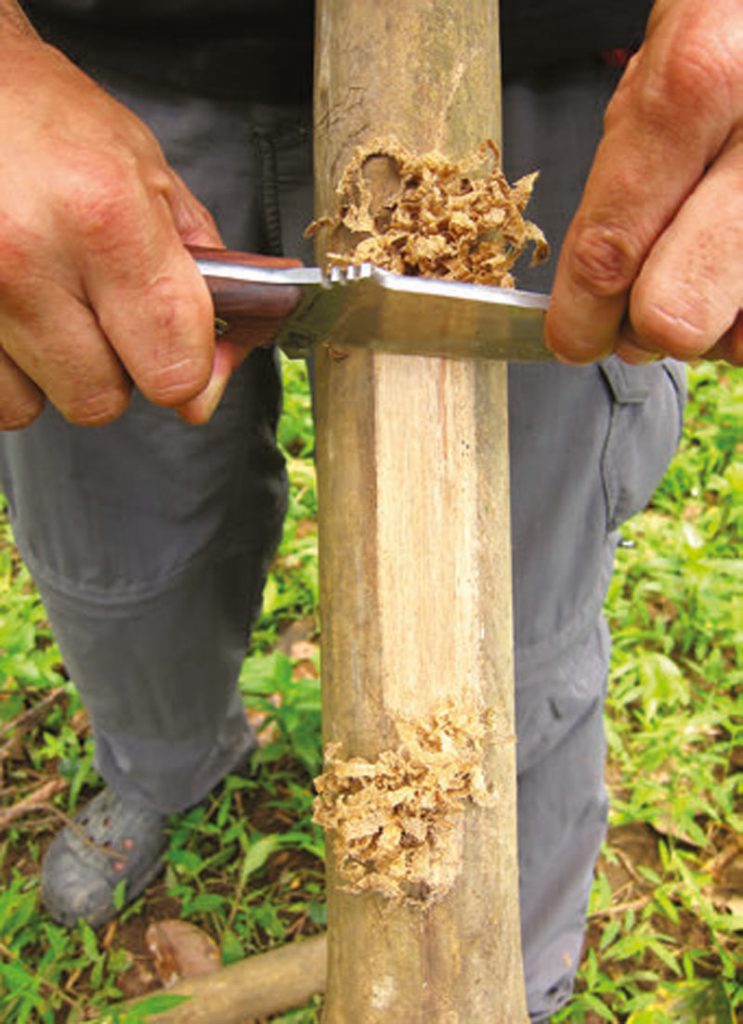
The HEFT (Hostile Environment Field Tool) 4 and 6 have the same features with the exception of their size and blade materials.
The HEFT 4 has a 3.94-inch (100.08mm) blade made from German Niolox stainless steel and is cryo-hardened to Rockwell 59. The knife alone weighs 6.02 ounces.
The HEFT 6 has a 5.75-inch (145mm) blade made of Sleipner tool steel with a Rockwell hardness of 60. It weighs 9.25 ounces and is also a little thicker than the HEFT 4.
The HEFT knives feature three sizes of wire strippers that double as thumb jimping. There’s a lanyard hole and lashing points, with an integrated striker and pry bar on the pommel.
JUNGLE CRAFT
In the tropics, the long blade rules— period! When it comes to making shelter, hacking through water vines, coconuts, and clearing the ground to make camp, no knife can compare with a good chopper.
However, a smaller knife is a welcome piece of kit to have available. The HEST II and HEFT knives were used more for utilitarian tasks, since most of the work in the Philippines gets assigned to the bolo.
Despite the heat and humidity, the jungle can be one of the easiest places to survive. Materials for shelter are abundant, and water is plentiful in streams, rivers or bamboo. Tinder and kindling for a fire are also easily accessible in a bamboo forest. I used the DPx knives to fulfill the needs of a survivor in this environment, utilizing the materials found in the jungle.
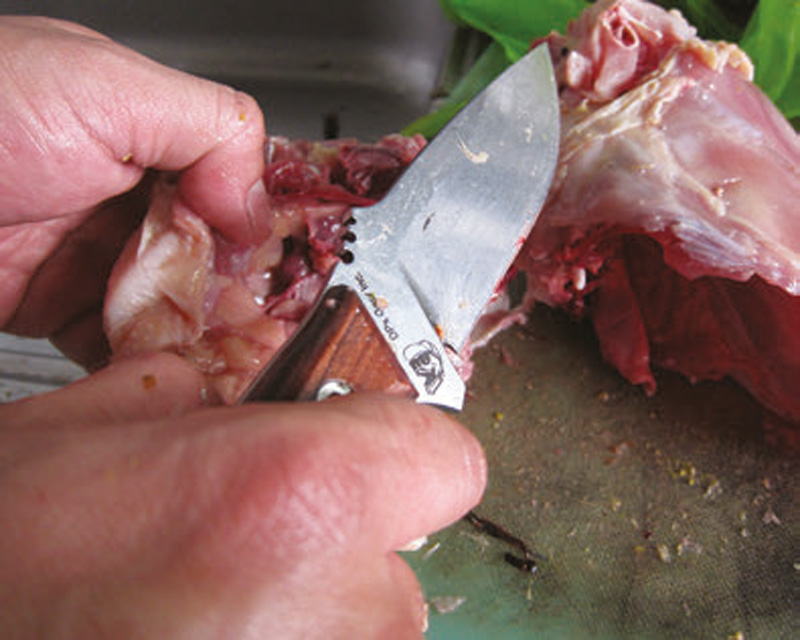
The DPx HEST II was used to fashion a bamboo drinking cup, which could also serve as a water catch by leaving it out overnight to collect rainwater. Shelter poles are easily sheared off with a long-bladed bolo, but if done correctly, a baton and the HEST II can hack it. The HEST II was handy when it came to cutting large coconut palm fronds for weaving into a waterproof roof.
The HEFT 4 did a plethora of jobs, maybe a wider variety than the HEST II simply because I had it on me more often. While hiking in the jungle, we came across some sugar cane. The HEFT 4 was much handier and more practical than a big bolo for shaving off the outer bark.
Later on that same hike, we came across a Doldol tree, which produces cotton—perfect for tinder. The wire strippers had just enough edge to spark a firesteel and set the tinder ablaze. Upon locating some dry bamboo, I used the HEFT 4 to scrape off dry shavings to light a fire. When scraping with the blade at a 90-degree angle against the bamboo, the knife needs to be sharp. It worked beautifully, and a few people had their turn trying it. The edge eventually dulled from this.
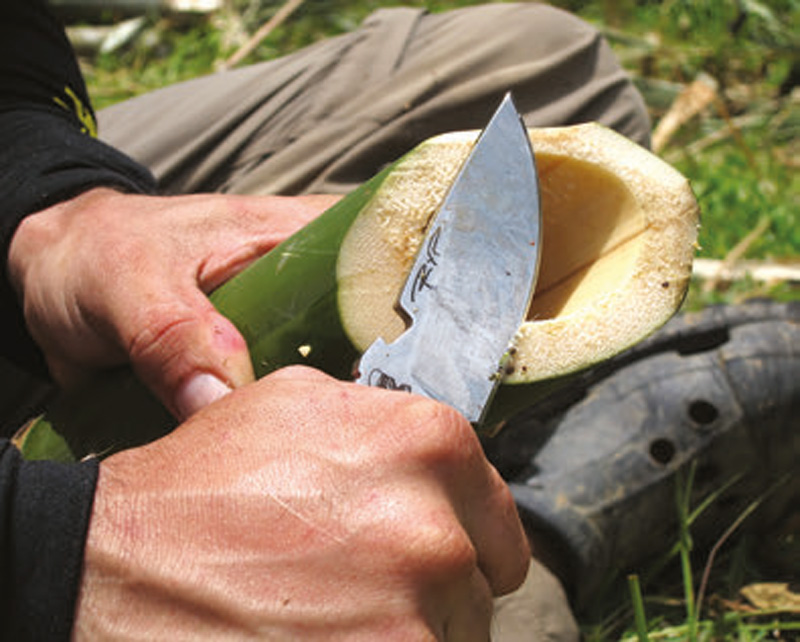
FOOD PREPARATION
As for camp kitchen duties, the HEFT 4 was used to clean and butcher two live chickens. Needless to say, the razorsharp edge easily handled this task.
The way Filipinos prepare chicken for certain dishes, it needs to be cut up into small pieces, bones and all. This is why they use a large meat cleaver or bolo. I was set on using the HEFT 4 even though it has a short blade. Choking way back on the handle added some momentum, and when that wasn’t enough, I could easily get the job done by placing the knife where I wanted and hammering my palm down on the spine to cut through the bones.
Coconuts were our favorite survival food in the jungle, and the HEFT 6 made a good coconut chopper. It had more control than a bolo, which resulted in less fatigue. At a jungle picnic in Mindanao, both the HEFT 4 and HEFT 6 cut up raw pork from a pig slaughtered a few days earlier.
The bottle opener on the HEFT 4 can easily be accessed without removing the knife from the sheath. With the HEST II, the knife has to be taken out of the sheath to access the bottle opener. This makes the knife not only obvious to the world, but also makes some people very uncomfortable. But the bottle opener on the HEST II worked better.
As a final test, we were in a camp hours away from civilization when it was time to open a can of, well, let’s just call it smeat. Since my regular pocketknife with can opener had mysteriously vanished, I used the HEST II blade to cut through the thick tin—and had no problems whatsoever!
All in all, the steel held an edge for a long time and was easy to resharpen. Despite the humid conditions, the leather performed amazingly. The Brazilian Santos wood developed a nice whitish patina, which only aided in gripping the tool.
DPx Knives are the real deal: harduse survival blades that will help you come back alive!
